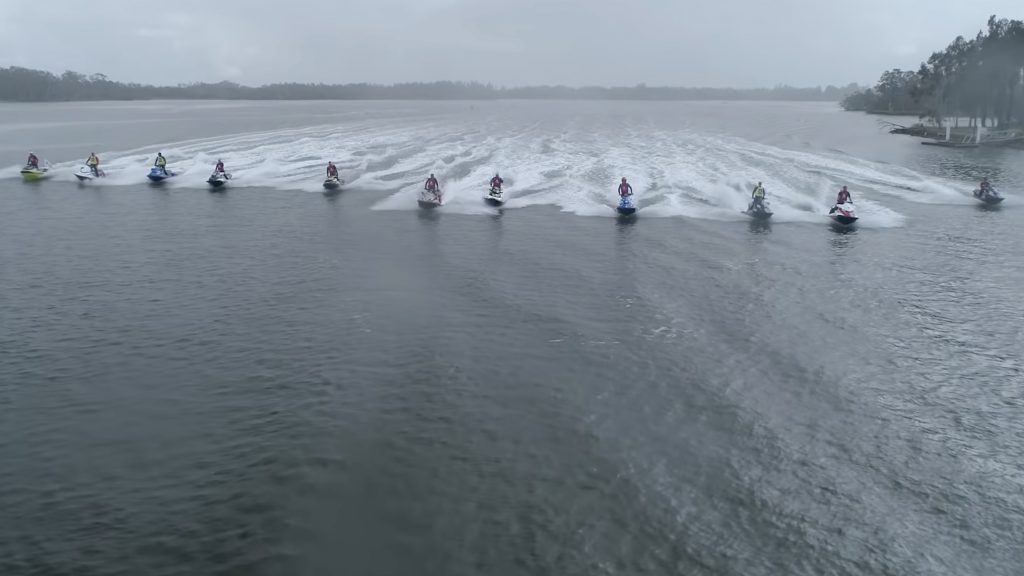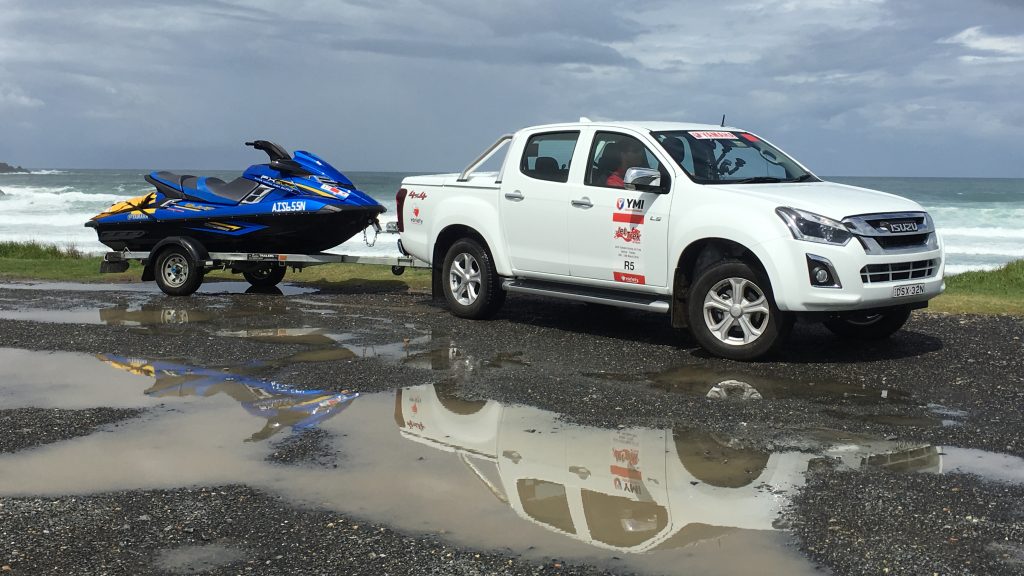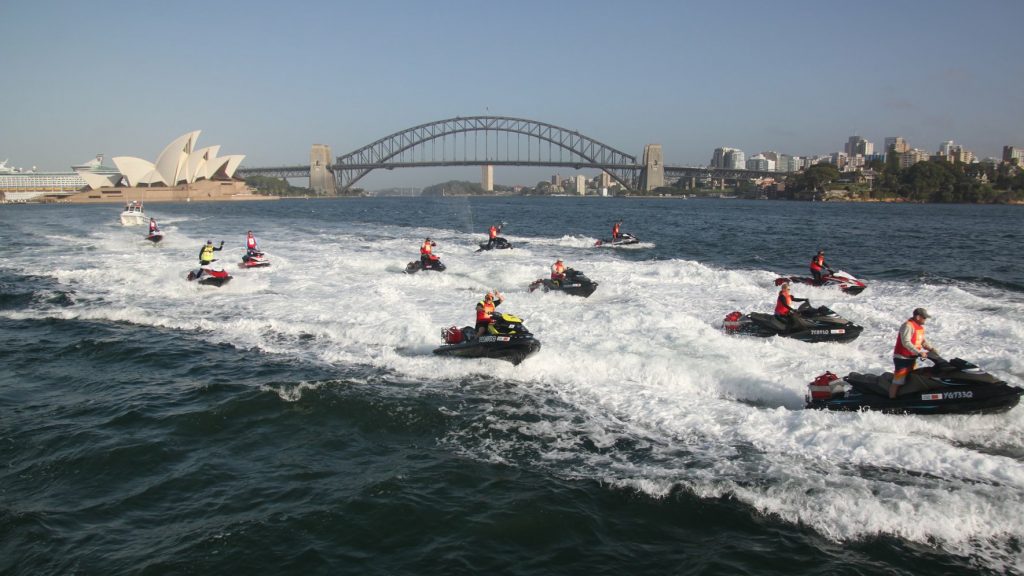Jet Skis and personal watercraft returned to Sydney Harbour briefly in March 2018 – after being banned from the iconic waterway in 2001.
The 2018 Yamaha Variety Jet Trek started the week-long annual ocean ride from Sydney for the first time in its 20-year history.
A field of 115 Jet Ski and personal watercraft riders signed up for the event, though the number of starters fell just below this figure.
Participants raised $380,000 for sick and disadvantaged kids – the highest total to date – for the 700km ocean ride from Sydney to Yamba on the NSW north coast, from 19 to 24 March 2018.
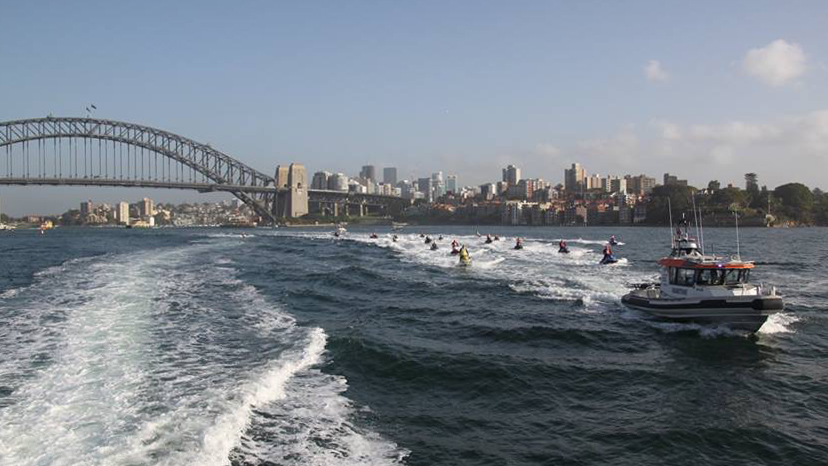
The previous record of 92 riders in the 2017 Yamaha Variety Jet Trek raised $270,000. The 2018 fundraising tally pushed the cumulative total beyond $2 million – after costs – over 20 years.
On the eve of the 2018 event, one of the eight teams won the opportunity to launch at a NSW Maritime base near Sydney’s Anzac bridge.
Which is how 14 Jet Skis – escorted by a NSW Maritime boat and two NSW Maritime officers on personal watercraft – were able to pass under the iconic Harbour Bridge and Sydney Opera House on their way to the first stop on the journey, the mining port of Newcastle.
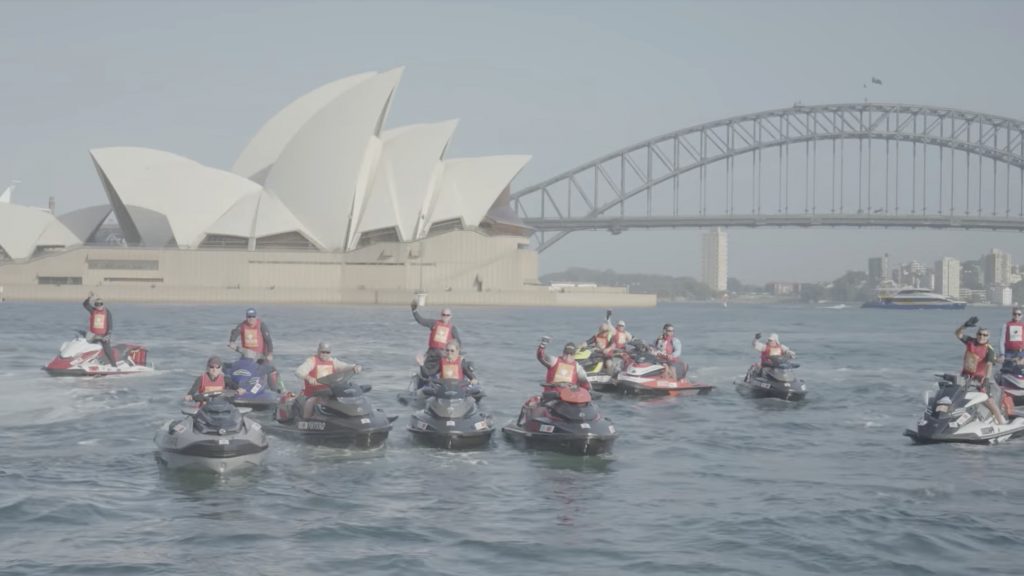
The rest of the field started from the Hawkesbury River boat ramp near the M1 Motorway north of Sydney.
The only other exemptions for Jet Skis in Sydney Harbour have been special stunt shows at Darling Harbour.
And in April 2016 a husband and wife started their around-Australia Jet Ski ride in Sydney Harbour under police supervision. Unfortunately their attempted circumnavigation ended in Far North Queensland six weeks and 3500km after it started.
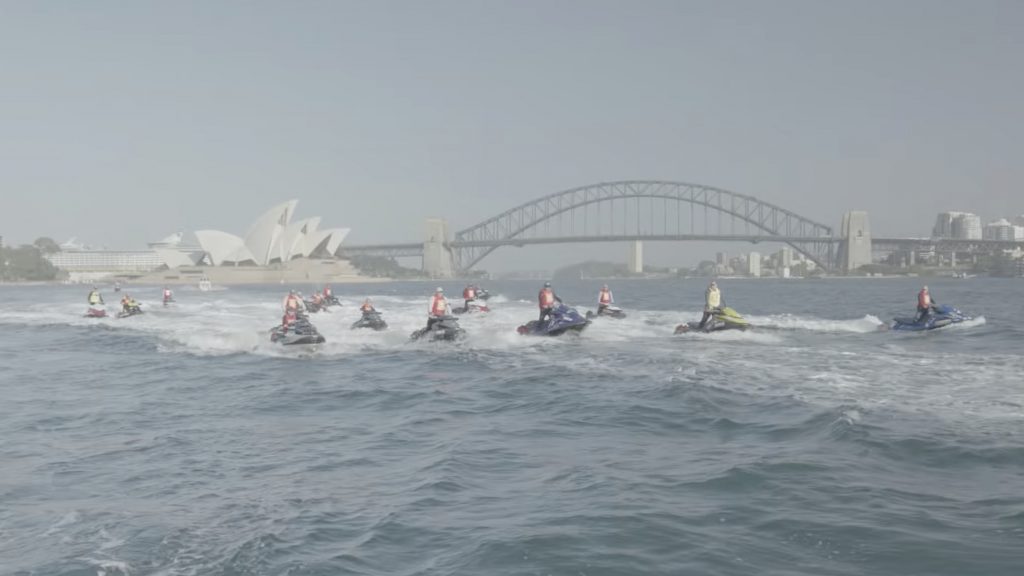
The 2018 Yamaha Variety Jet Trek included riders from Tasmania, Townsville — South and West Australia – and everywhere in between.
All three watercraft brands were represented, however Yamaha FX models out-numbered Sea-Doos and Kawasakis by more than nine-to-one.
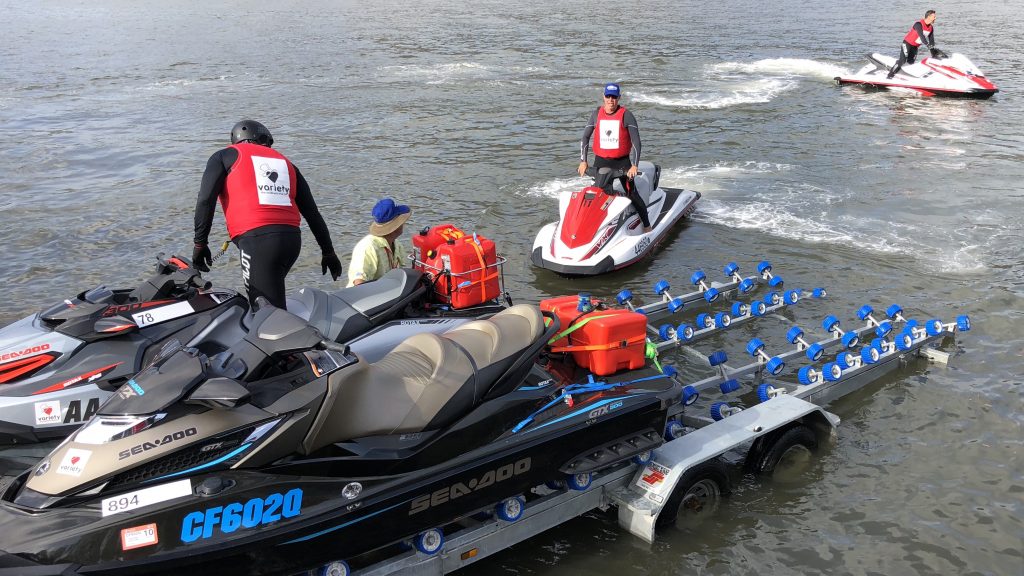
The Yamaha Variety Jet Trek is not a race against the clock, it is a test of endurance.
Almost a quarter of the riders – 26 participants – were first-timers in 2018, while the remainder were experienced ocean riders, and from teenagers to retirees.
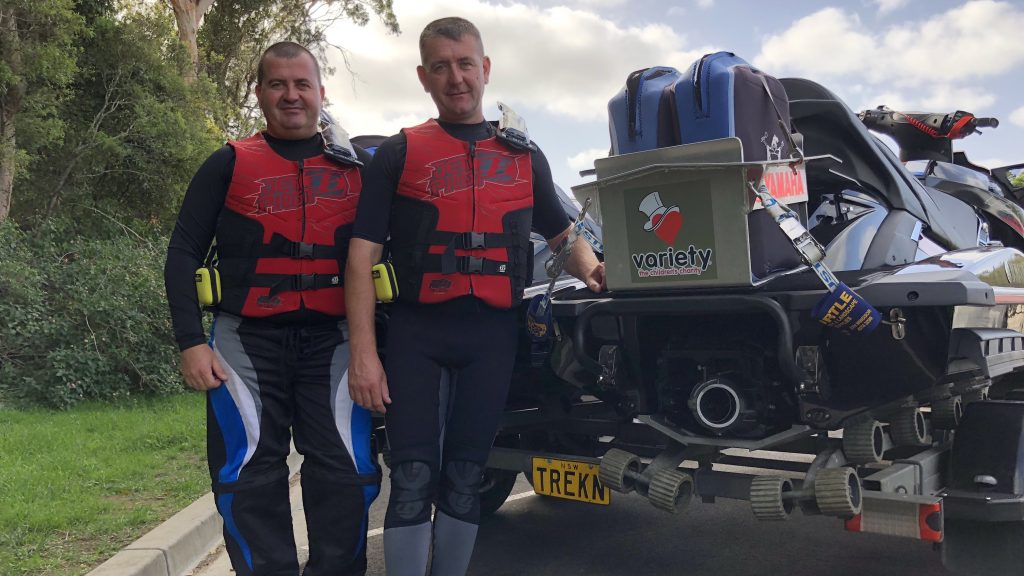
Sydney brothers Paul and Peter Locock (pictured above) and their support driver Gary Boon are the only three participants to compete in all 20 Jet Treks to date.
“The first event in 1998 was effectively a group of mates on Jet Skis raising money for kids,” said Paul Locock. “Now it’s a massive event and the more Jet Skis that enter, the more money gets raised for charity.”
Paul Locock says most first-timers don’t appreciate how challenging it can be to ride in the ocean.
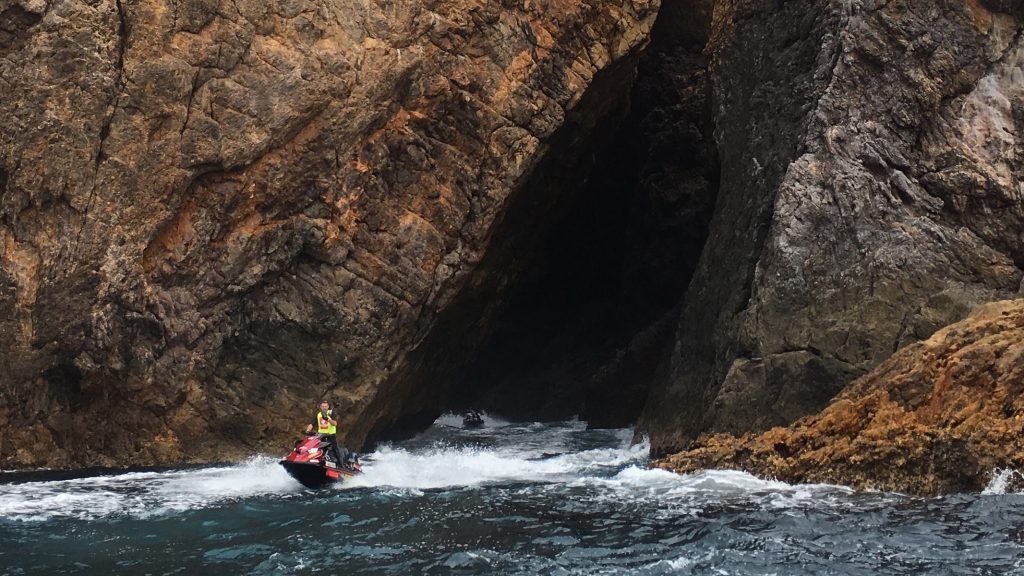
“It looks easy but I always recommend first-timers do a few rides in the ocean with a buddy, and don’t just wait for an easy day weather-wise. Obviously you’ve got to play it safe, but it’s worth going out and getting as much experience as possible.”
Queenslander Ryan Lacaze travelled from Townsville to compete in his “17th or 18th” event.
“First and foremost it’s about raising money for kids, but it’s also a great way to catch up with Jet Ski riding mates from across the country for one week every year,” says Lacaze.
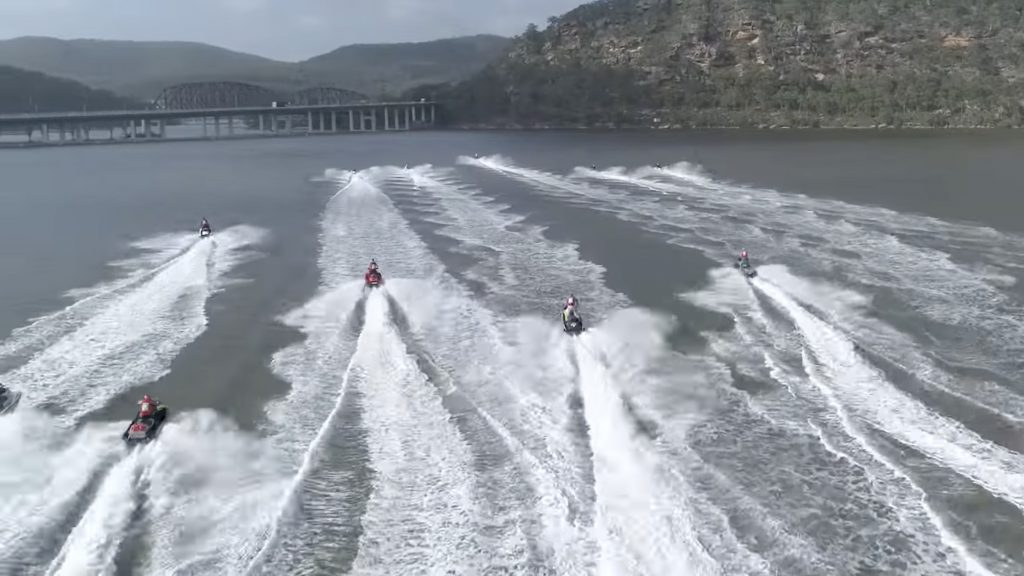
Sydneysider Geoff Nulla has ridden Jet Skis for 15 years and specialises in ocean riding, but this was the first Jet Trek.
“I’ve been wanting to do this event for years, now it’s in Sydney this is the time to do it,” said Nulla.
Day One was a relatively short 105km leg from Sydney to Newcastle, with a brief stop at Terrigal for an early lunch.
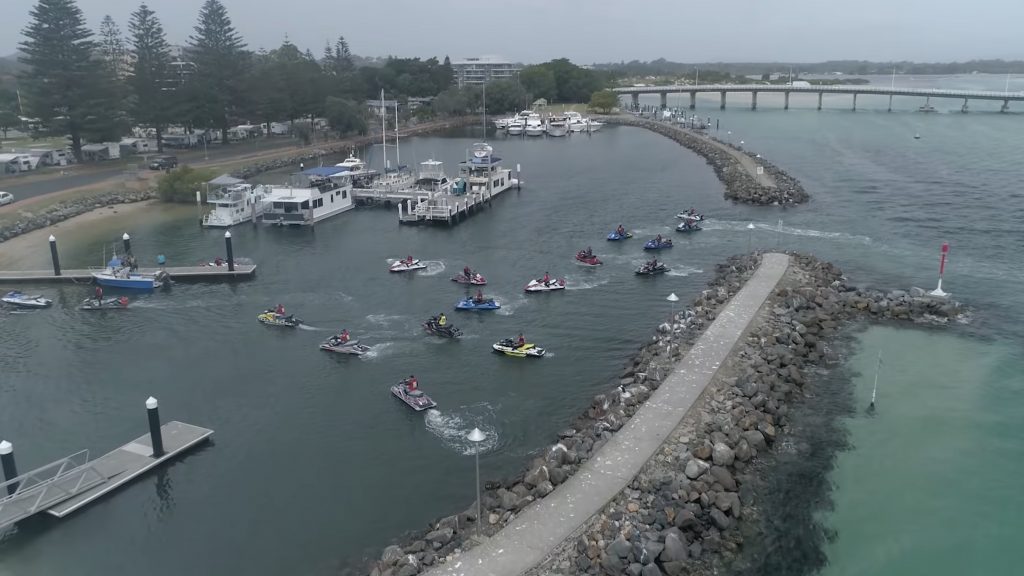
Day Two was a 170km run from Newcastle to Tuncurry, where the event encountered huge swells, but not severe enough weather to cancel the leg.
Day Three’s 100km run from Tuncurry to Port Macquarie started to test the endurance of the field as the swell increased, the winds picked up and it started to rain.
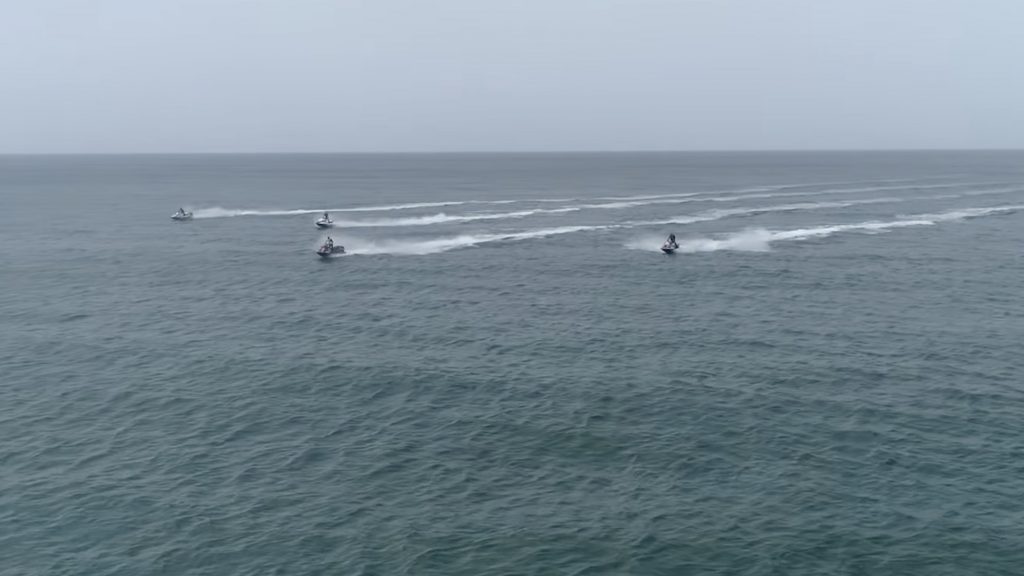
Day Four’s planned rest day was put to good use, with many riders using the opportunity to give their weary arms and legs time to recover.
However, the weather refused to ease, and so the start of Day Five from Port Macquarie was cancelled and the convoy headed to the halfway point by road, instead launching from South West Rocks for the day’s second leg, a 70km run to Coffs Harbour.
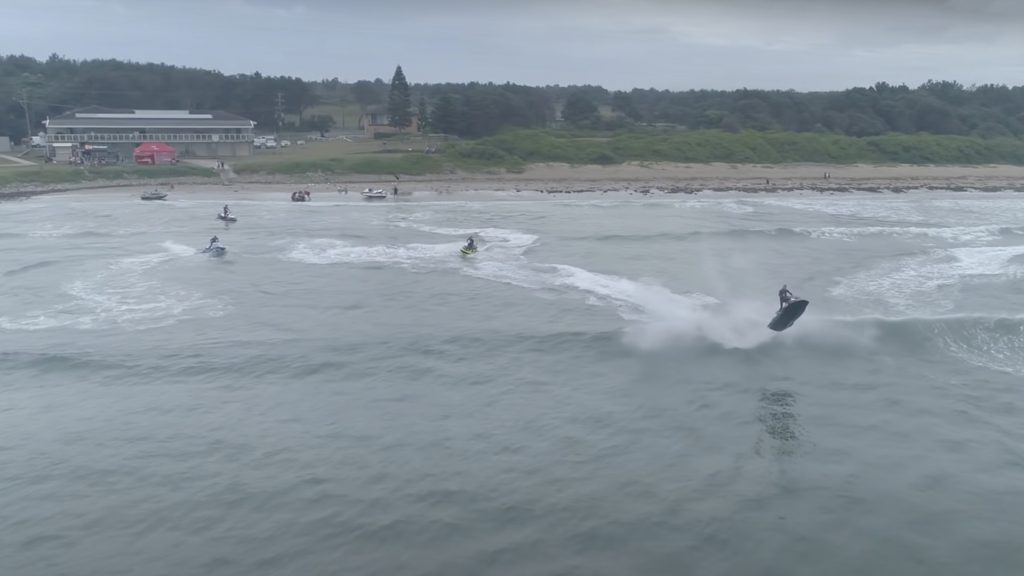
Day Six was a solid 110km run from Coffs Harbour to Yamba. While the rain had largely subsided, the swells were huge, up to 4 metres.
Fortunately the wave intervals were about 10 seconds apart, so it was like riding in a giant corkscrew – or a wet desert, as it was difficult to maintain visual contact with teammates. It only took one giant wave for a dozen riders to disappear – until you hit the top of a wave, gaining visibility.
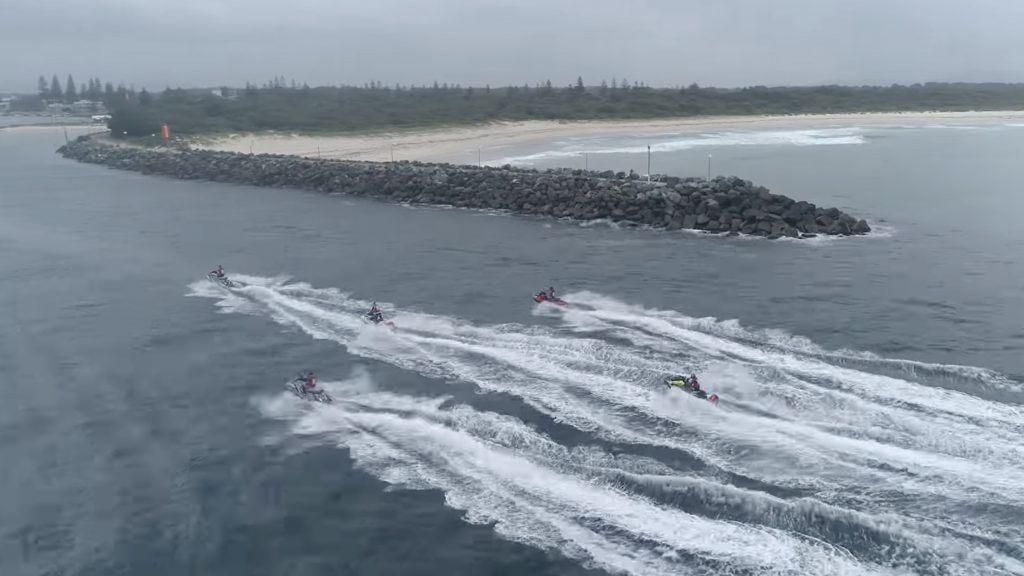
Sometimes a wave would be 2 metres high on approach, but would have a 4-metre drop on the other side.
Riding into the wind wasn’t ideal, either. Bury the nose of the ski into the water when coming off a wave, and you got a blast of salt water so fierce you could feel it behind your eyeballs.
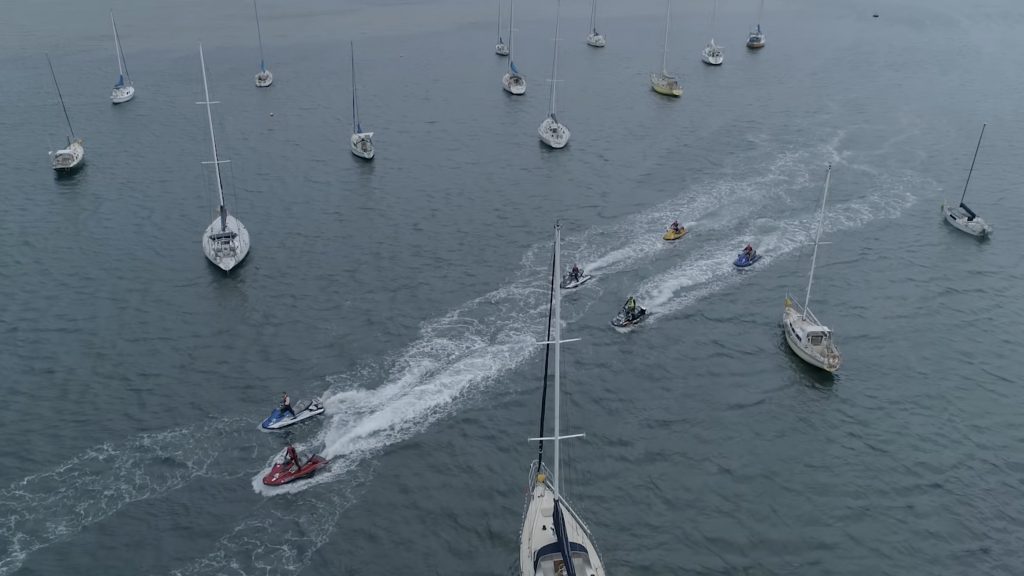
Imagine that experience repeated hundreds of times, while your arms and legs are aching as you try to hold on – and attempt to keep a close eye on your teammates so you don’t become disoriented.
As many riders discovered, swearing at the ocean did little to ease the pain or make the journey any easier. You’re at the mercy of mother nature out here.
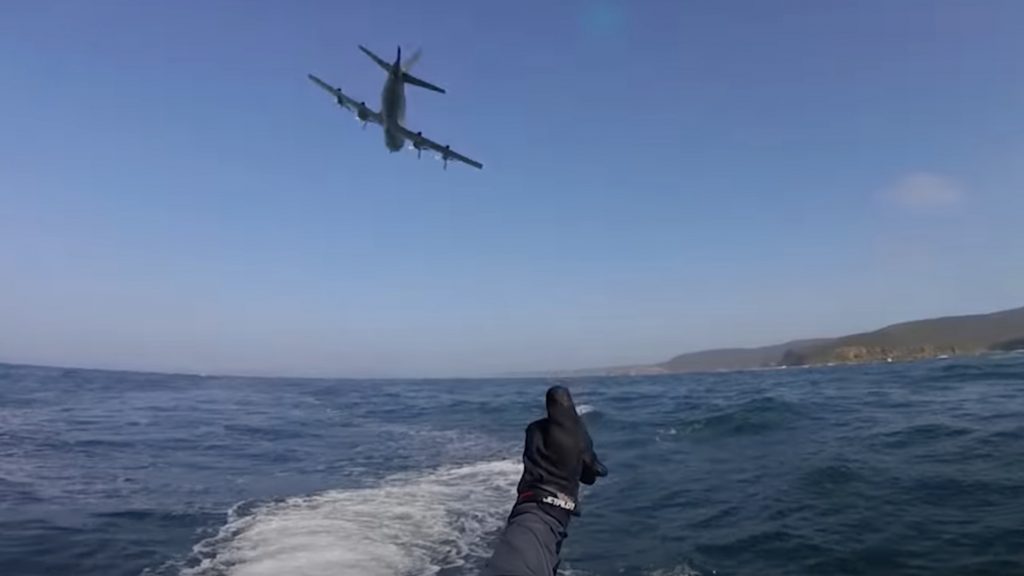
Which is why many participants also carried a swag of painkillers, gels, ointments, and anti inflammatories – and phoned ahead to book physiotherapists in the next town.
Who’d have thought that, after a week in the ocean on a Jet Ski, a set of stairs would become the next major challenge – hobbling with stiff arms and legs for several days after the finish.
And then you stop and think about the challenges that some of the kids in need are going through – who you see at ceremonies each night as they receive much-needed equipment – and all of sudden you’re signing up for next year.
